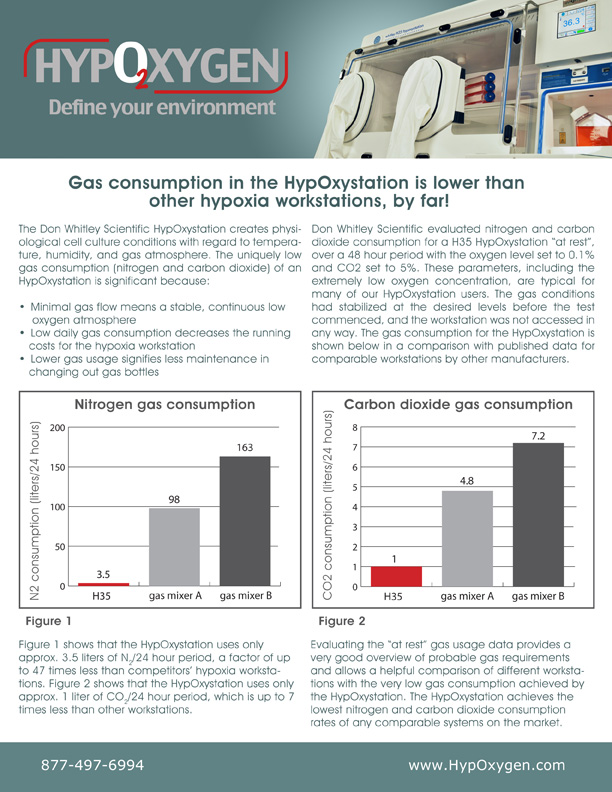Patrick Frost, Professor at UCLA and the West Los Angeles Medical Center, investigates how targeting angiogenesis and the adaptive hypoxic response in multiple myeloma cells affects tumor progression. He hopes his studies will provide insight into the pathology and chemotherapy resistance of this incurable disease, which occurs with a significant frequency in the Veteran population. He has been using the H35 HypOxystation for almost 3 years now, and he does not miss bygone days in the lab: “We started out with just a Plexiglas box, with some valves in it, with a front cover just held on magnetically, placed inside an incubator. We would burn through a 50 L tank of nitrogen in 48 hours. I was never convinced that we had the correct level of oxygen in there”.
Now, despite two groups using the HypOxystation intensely at 0.2 % oxygen, that gas bottle can easily last a month. Dr. Frost says, “If we shut the workstation down, the atmosphere stays stable, we don’t lose the hypoxia. It’s been a year since we replaced the CO2 bottle, and the compressed air.” Don Whitley Scientific has conducted gas consumption studies that show the H35 HypOxystation “at rest” uses only 3.5 L of nitrogen gas/24 hour period, 47 and 28 times less than other hypoxia workstations. Part of the reason for the stability of that atmosphere is the annealed, thick acrylic build of the HypOxystation. Dr. Frost states, “It’s pretty robust, it’s survived a move and a forklift and it never sprung a leak throughout. “
Read more about the HypOxystation in the fight against multiple myeloma here.
